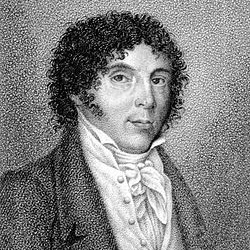Crema and Music
Where history intertwines with melody, a centuries-old tradition is born.
 1526Origins of a Secular Theatrical Passion
1526Origins of a Secular Theatrical PassionThe Cremaschi's passion for theater has distant origins. The first documented dramatic performance dates back to 1526 and took place in Palazzo Vimercati Sanseverino. From that moment on, performances and shows followed one another in the most important noble palaces of Crema, as was the custom at the time in many other Italian cities.
- The Triumph of 'Il Pastor Fido'1595

Worthy of note in 1595 was the staging at Palazzo Zurla of "Il Pastor Fido" by G.B. Guarini, a highly regarded playwright of the period, which attracted people from all over Lombardy for the sumptuousness of the scenes, so much so that it received compliments from the author himself.
 1678The First Public Theater
1678The First Public TheaterHowever, the creation of the first public hall used for theatrical activities had to wait until 1678 when a theatre with thirty-eight boxes and stalls was created in a wing of the Town Hall.
- Piermarini's Theatre: A New Symbol of Prestige and Culture1786

But it was only with the construction of the new theatre in 1786 by the architect Piermarini that the city expressed all its social and cultural prestige. Finally it had an authentic temple of opera and an exceptional meeting place for social and cultural events.
 1800La Piccola Scala
1800La Piccola ScalaIn the two centuries that followed, the "Piccola Scala", as the theatre was called after its illustrious architect, featured the works of the most important composers of the time, but there were also performances of works by talented composers from Crema, such as Pavesi's "Bianca d'Avanello", Benzi's "Gimone Rethel" and Petrali's "Giorgio De Bary". From such a cultural ferment arose many artists who soon became famous in Italy and abroad. In addition to the musicians and composers Francesco Cavalli, Giuseppe Gazzaniga, Stefano Pavesi, Vincenzo Petrali and Giovanni Bottesini, Luigi Manini (1848-1936) stood out in the art of painting, scenography and architecture, and Giovanna Calvi, Umberto Chiodo and Ranuzio Pesadori in opera singing.
- The End of an Era: The Destruction of the Piermarini Theatre1937

Unfortunately in 1937 the Piermarini Theatre was destroyed by a fire and with the flames the deep musical culture and tradition that had characterized the city in the previous centuries were suddenly extinguished. There were many projects to rebuild the theatre but at the gates of the Second World War the funds ran out.
 2000The Return of the Theatre: The Restoration of San Domenico and the New Cultural Era
2000The Return of the Theatre: The Restoration of San Domenico and the New Cultural EraWe had to wait until 2000, a good 63 years later, for the return of a real theater to the city with the restoration of the San Domenico convent complex. Today the Teatro San Domenico represents an important theatrical reality for the city and has recently taken over the management of the Istituto Civico Musicale "Luigi Folcioni" which has been the most important music school in the area since 1919.











